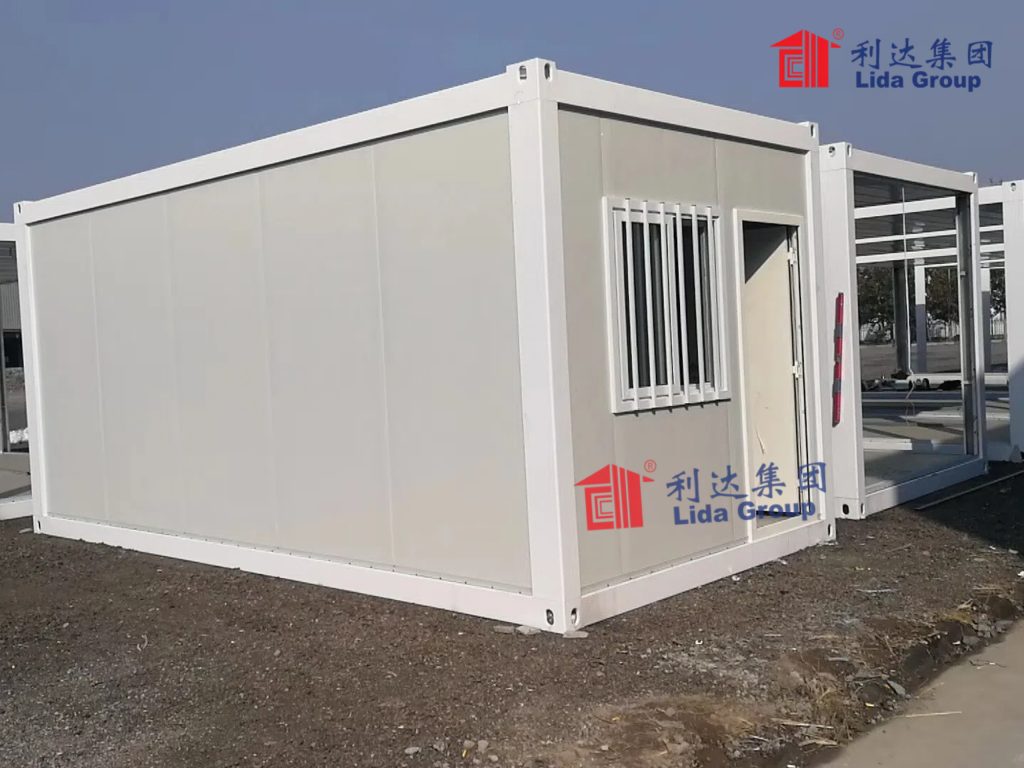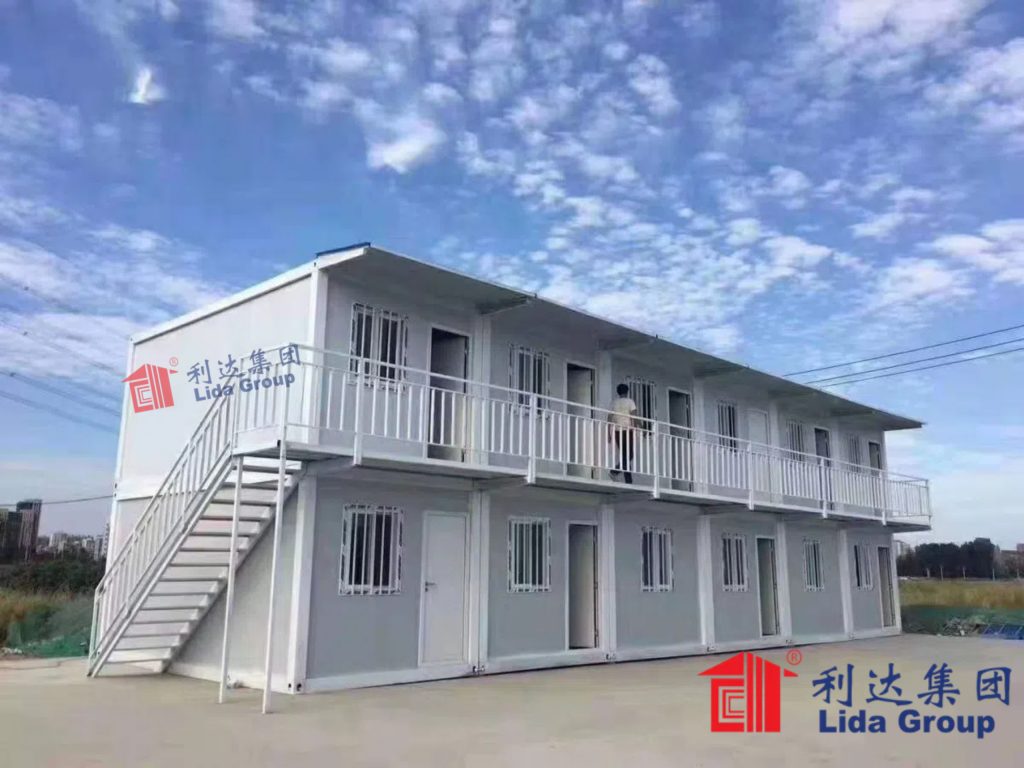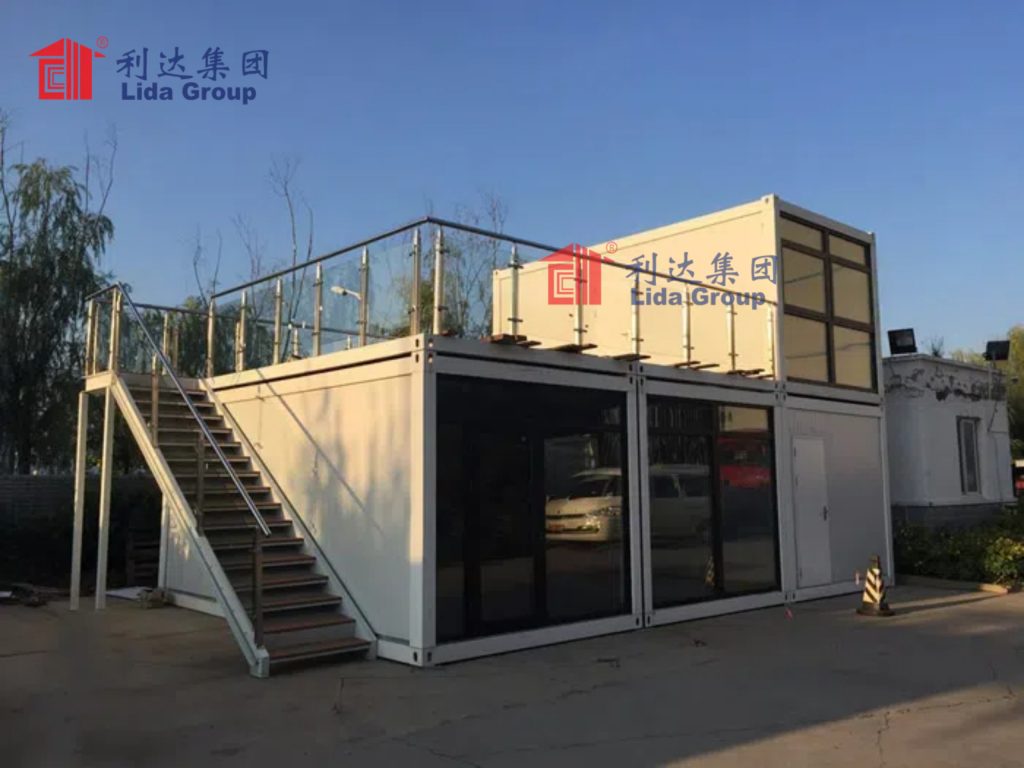Relief Organization Testing Innovative Temporary Housing Solution
As natural disasters continue to impact communities around the world, relief organizations face ongoing challenges in providing adequate temporary shelter for those displaced by extreme weather events and other crises. Conventional temporary housing structures like tents can only be used for a limited time before conditions deteriorate, and more permanent prefabricated buildings require significant time and resources to transport and assemble on-site. However, a Chinese engineering company believes it has developed an innovative temporary housing solution that could help relief groups house larger numbers of people faster and at lower cost – mobile labor camps composed of converted shipping containers outfitted with insulated wall panels.
Lida Group, headquartered in Shenzhen, is best known as a manufacturer of modular construction products for commercial and industrial facilities. However, in recent years the company has been researching ways its patented assembly systems and materials could benefit humanitarian relief efforts. One concept that has shown promise is a portable, multi-unit temporary housing camp created from refurbished 40-foot shipping containers. Utilizing its expertise in container logistics, Lida Group developed a process to convert standard cargo containers into basic living units that can then be rapidly configured into larger clustered camps.

Key aspects of Lida Group’s temporary housing solution include:
– Refurbished Standard Shipping Containers as Housing Units: The basic building block is a standard 40-foot shipping container refitted internally to serve as a single room living space. Lida Group strips containers down to the steel frame and installs new insulated flooring, wall paneling, lighting, and electrical systems. Basic furnishings like bunk beds provide sleeping space for 4-6 people.
– Modular Expansion with Insulated Wall Panels: To accommodate more occupants, individual housing containers can quickly connect end-to-end or back-to-back using Lida Group’s patented insulated wall panels. These lightweight sandwich-composite panels provide strong, water-resistant thermal barriers that allow containers to be joined in various configurations. Within a single day a cluster of containers can be expanded into a camp accommodating hundreds of residents.
– Mobile Camp Setup: Since the housing units remain on their standard container chassis, the entire temporary camp can be transported efficiently via trucks or ships. Upon arrival on-site, the prefabricated housing clusters can be rapidly deployed using cranes or forklifts. Electrical connections, water distribution manifolds, and other utility hookups are easily installed to service the insulated habitat zones.
– Reduced operational costs: By retrofitting cargo containers and utilizing reusable insulated wall panels, Lida Group estimates its temporary housing solutions can achieve construction and lifespan costs up to 30% lower than traditional tent camps or wooden prefab buildings. Standardization of components also simplifies maintenance and resupply.

With support from the Chinese government, Lida Group has already deployed small-scale trials of its shipping container housing camps domestically to assist communities impacted by floods and earthquakes. Encouraging preliminary results prompted discussion with international humanitarian organizations about potential partnerships to test the system in disaster scenarios abroad. One organization that expressed strong interest was Global Aid Network (GAN), a large United States-based NGO that coordinates major relief operations worldwide.
In mid-2022, GAN worked with Lida Group to establish a trial deployment of the temporary housing solution after severe flooding impacted rural communities in central India. Within 72 hours of the disaster being declared, Lida Group had assembled a transport convoy comprising 20 refitted shipping containers, 28 insulated wall panels, and support equipment. The convoy traveled overland from China, crossing the Himalayas, before arriving at the disaster site 10 days later. There, a large open area had been prepared by GAN teams for construction of the experimental housing camp.
As local residents and GAN volunteers looked on with curiosity, Lida Group engineers swung into action. Using mobile cranes, the containers were quickly configured into a multi-unit clustered layout in accordance with blueprints. Wall panels were affixed between containers to form insulated habitat zones. Groundworks teams rapidly installed utility trunking and made connections for water, power and sewage. Within only 4 hours, a preliminary camp had been constructed providing basic shelter for up to 200 displaced flood victims. Over the following 2 days, Lida Group adapted and expanded the housing clusters as more residents arrived, finalizing a camp comprising 80 refitted containers partitioned into insulated rooms and communal areas.

With peak shelter needs addressed, attention turned to surveying resident satisfaction and technical performance of Lida Group’s temporary housing solution over the subsequent 6 month period. GAN and Lida Group representatives conducted regular interviews and inspections to assess livability, maintainability and durability of the system in changing seasonal conditions. Feedback from residents was also very positive. While living spaces in the shipping container clusters were basic, families appreciated the secure, weatherproof accommodation after losing homes in the floods. Communal cooking and bathroom facilities worked well. Maintenance and repairs were simplified for Lida Group crews through standardization of components. By utilizing insulated wall panels, indoor climate control through India’s hot summers and monsoon rains was achieved with minimal energy usage.
At the conclusion of the 6 month trial period, GAN and Lida Group collaborators convened to review outcomes. Both parties deemed the testing a resounding success based on technical performance metrics and feedback captured. The temporary housing solution had proven capable of rapidly providing quality shelter to large numbers of displaced persons in the wake of a disaster. Simple, modular expansion allowed the camp size to flexibly meet evolving needs. Standardization streamlined logistics and maintenance. Perhaps most importantly, resident wellbeing and livability targets were consistently achieved throughout occupancy. For GAN, a key relief mandate had been fulfilled working with Lida Group’s system.

As a result of these positive findings, GAN and Lida Group committed to further developing their partnership. They established a 5 year agreement for continued joint research, with the shared goal of further optimizing and validating Lida Group’s temporary housing technology. Key initiatives include:
– Conducting additional disaster deployment trials globally to assess performance in diverse environmental conditions. This will provide a more robust data set to refine specifications.
– Incorporating resident feedback from occupations into iterative design improvements like enhanced communal facilities, indoor-outdoor flow, and accommodation customizations.
– Developing prefabricated ancillary building kits utilzing the insulated wall panel system, like schools, clinics and storage hangars to create self-sufficient communities.
– Exploring inclusion of renewable power and independent water/waste recycling to achieve fully off-grid capability in remote/austere locations.
– Optimizing modularity and portability to permit air, sea and overland transportation via multi-modal containers if needed.
– Establishing standardized training programs for rapid volunteer construction crews globally.
– Assessing full lifecycle and carbon footprint modeling to ensure sustainability targets can be met.
– Pursuing humanitarian relief certification/accreditation from international standards bodies.

At the end of this extensive 5 year testing and research program, GAN and Lida Group aim to have a fully validated and deployable turnkey temporary housing solution ready for global implementation. If successful, it could revolutionize shelter delivery in disaster scenarios – providing resilient, climate-appropriate dwellings at up to 30% lower costs compared to alternatives. Relief groups would gain a new logistical weapon to rapidly house larger numbers of displaced persons. With additional funding, the partners also hope to establish a deployment reserve of pre-positioned housing units strategically located worldwide for immediate emergency response.
In summary, the innovative temporary housing concept developed by Lida Group through converting standard shipping containers and utilizing patented insulated wall panel systems has shown tremendous promise based on initial disaster deployment trials supported by Global Aid Network. By leveraging modules, standardization and portability, it achieves construction and operational cost reductions while meeting livability needs. Further research and validation through additional disaster scenarios will optimize the solution. If the 5 year partnership goals are realized, it could dramatically improve the speed and scale of shelter delivery in humanitarian crises through a logistically advanced and sustainable system. Relief groups may at last gain an effective solution to solve one of their most persistent and complex challenges – rapidly housing large displaced populations in the wake of natural disasters.

Related news
-
Engineers specify mobile prefabricated sanitation units from Lida Group's integrated camp solutions kitted with composite panel laundry and shower facilities.
2024-10-21 17:49:14
-
Film production chooses portable prefabricated housing encampments from Lida Group for location crews utilizing durable insulated wall panel dorms and multi-use spaces.
2024-10-21 17:30:15
-
Aviation firms construct hangars using robust fireproof structural steel framing and nonflammable enclosure systems from Lida Group for aircraft maintenance.
2024-10-17 15:45:06
contact us
- Tel: +86-532-88966982
- Whatsapp: +86-13793209022
- E-mail: sales@lidajituan.com


